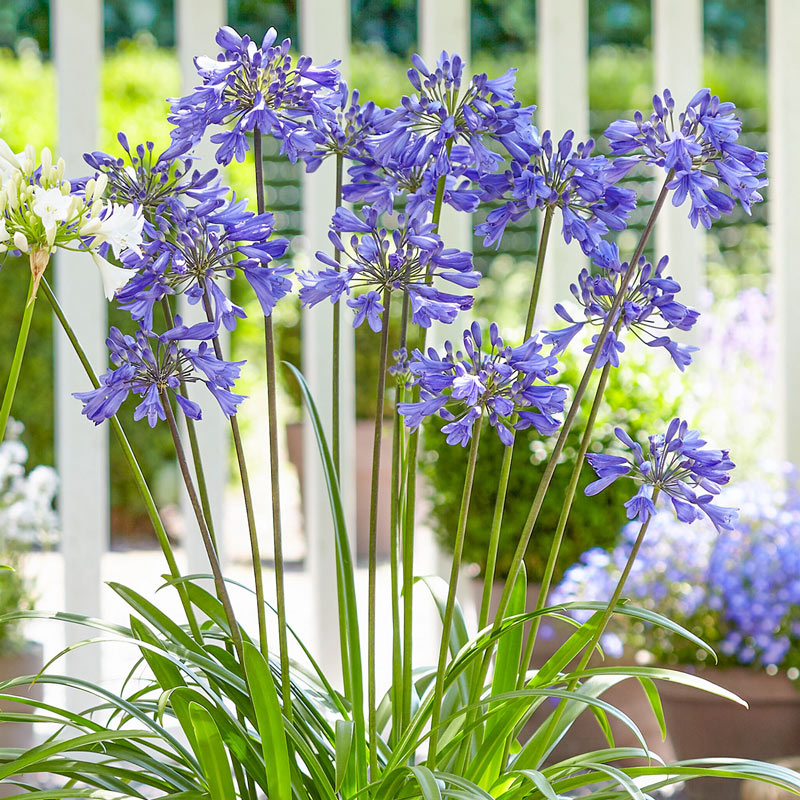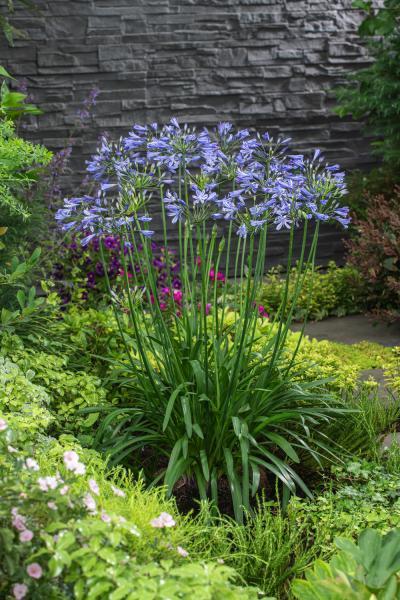Spectacular Agapanthus: Enhancing Your Garden's Beauty
Spectacular Agapanthus: Enhancing Your Garden's Beauty
Blog Article
Letting Loose the Secret to Effective Agapanthus Farming: Idea for a Flourishing Garden
In the realm of gardening, growing agapanthus effectively requires a critical technique that includes various elements of plant care. By comprehending the subtleties of agapanthus farming, one can develop an atmosphere where these plants prosper and grow abundantly.
Growing Agapanthus: Finest Practices
When planting Agapanthus, proper soil prep work is vital for making certain effective development and advancement of these lovely flowers. Agapanthus, typically understood as Lily of the Nile or African lily, grows in well-draining dirt with a somewhat acidic to neutral pH level - Agapanthus. Before growing, it is important to amend hefty clay dirts with organic matter such as compost or peat moss to boost water drainage and offer crucial nutrients for the plants
To plant Agapanthus, select a location that receives full sunlight to partial shade, as this will certainly advertise healthy growth and bountiful flowering. Dig a hole two times the diameter of the plant's root ball and put the Agapanthus at the very same depth it was previously expanding. Gently backfill the opening with dirt, weighing down securely to get rid of any air pockets around the origins.
Water the recently grown Agapanthus completely and remain to maintain the dirt equally moist, specifically throughout the plant's energetic expanding season. Agapanthus. Applying a well balanced fertilizer once a month can better support the plant's development and blooming. By complying with these ideal practices for planting Agapanthus, you can create a stunning display screen of these fascinating blossoms in your garden
Suitable Soil Issues for Agapanthus
For optimum growth and growing success of Agapanthus plants, ensuring the soil conditions are perfect is crucial. Agapanthus thrives in well-draining dirt with a somewhat acidic to neutral pH degree varying from 6.0 to 7.0. This kind of soil allows for adequate water drain, avoiding waterlogging which can result in root rot. To improve soil drainage, think about including raw material such as compost or peat moss when preparing the growing site. Additionally, Agapanthus favors dirt that is abundant in nutrients, so integrating a well balanced plant food during the growing season can promote healthy and balanced growth and lively blooms.

Watering and Fertilizing Tips
To guarantee healthy development and vibrant flowers, proper watering and fertilizing strategies are necessary for effective Agapanthus farming. Agapanthus plants profit from normal watering, particularly during the expanding period.
When it involves feeding Agapanthus, a well balanced plant food with equal parts nitrogen, phosphorus, and potassium can be used in the spring to advertise healthy and balanced development and flowering. Slow-release fertilizers are excellent for offering nutrients slowly anonymous over an extensive duration. Prevent over-fertilizing, as this can bring about too much foliage development at the hop over to here cost of blooms.
Furthermore, including raw material like compost into the soil can enhance nutrient levels and enhance dirt structure, aiding in the total wellness of the Agapanthus plants. By adhering to these watering and feeding tips, garden enthusiasts can ensure their Agapanthus plants prosper and generate stunning screens of flowers.
Pruning and Deadheading Techniques
Appropriate trimming and deadheading techniques play an important function in preserving the health and visual appeals of Agapanthus plants, matching the essential techniques of watering and feeding for effective cultivation. Trimming Agapanthus involves getting rid of spent flower heads, dead or yellowing leaves, and general shaping of the plant to promote far better growth. Deadheading, the procedure of getting rid of faded flowers, not just boosts the plant's appearance however also urges further flowering.
When deadheading Agapanthus, it is suggested to trim off the blossom stem at the base using sharp, clean shears. This procedure reroutes the plant's power from seed production back into origin and vegetation growth, advertising a healthier and a lot more durable plant. Regular deadheading can extend the growing duration of Agapanthus and prevent self-seeding, which can bring about overcrowding.
In terms of pruning, Agapanthus typically gain from a light trim after blooming to clean up the plant and motivate fresh development. Cutting down the invested flower stems and removing any dead or damaged foliage helps maintain the plant's vigor and overall appearance. Nonetheless, it is vital to stay clear of cutting into the crown of the plant, as this can weaken its health.

Protecting Agapanthus From Vermins and Diseases
Carrying out efficient parasite and disease administration techniques is important to securing the wellness and vitality of Agapanthus plants in farming. Agapanthus are typically hardy plants, but they can still come down with numerous parasites and illness if not properly looked after. One common insect that influences Agapanthus is the Agapanthus borer, a caterpillar that tunnels into the plant, triggering damage to the leaves and flowers. To stop invasions, normal examination of the plants is important. If borers are identified, they can be by hand eliminated, or insecticidal soap can be used as a control step.
In enhancement to parasites, Agapanthus are vulnerable to conditions such as root rot and fungal leaf places. By staying watchful and addressing pest and illness concerns promptly, gardeners can aid their Agapanthus thrive and flourish.

Conclusion
In verdict, successful cultivation of agapanthus needs appropriate planting strategies, suitable dirt problems, sufficient watering and feeding, regular pruning and deadheading, and security from bugs and illness. By adhering to these suggestions and methods, garden enthusiasts can make sure a flourishing yard loaded with beautiful agapanthus blossoms. Agapanthus. Keep in mind to keep consistent care and attention to detail to promote the health and long life of these sensational plants
When growing Agapanthus, proper soil have a peek at this site preparation is necessary for guaranteeing successful development and growth of these lovely blossoms.Water the newly planted Agapanthus extensively and continue to maintain the dirt evenly damp, particularly throughout the plant's active expanding period.For ideal growth and blooming success of Agapanthus plants, guaranteeing the soil problems are suitable is crucial. When hair transplanting or planting Agapanthus, ensure the dirt is well-prepared to supply the needed foundation for the plants to establish themselves successfully. One typical parasite that affects Agapanthus is the Agapanthus borer, a caterpillar that passages into the plant, triggering damage to the leaves and blossoms.
Report this page